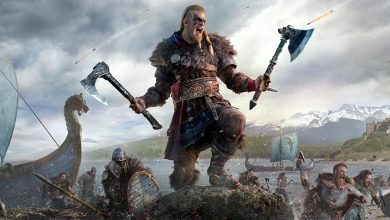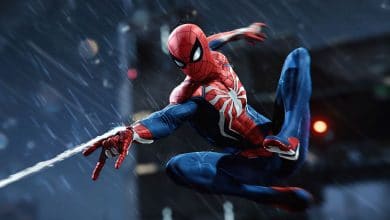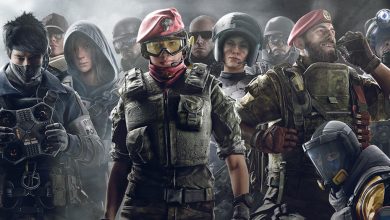Gearbox Software’s brand of co-op role-playing shooter carnage returns in less than two weeks with the release of Borderlands 2. We sat down with studio co-founder Randy Pitchford to talk about the new game and why it’s better than its predecessor in every way.

Was Borderlands always intended as a role-playing shooter or did you start out making a shooter or RPG and then decided to expand into the other?
From the very beginning, the idea was to blend the genres. We realised that what was fun about a shooter – the moment-to-moment skill of moving, aiming and dodging – was not mutually exclusive with the long range involvement of collecting loot, levelling up, and choosing, building and growing out a character. The fun that we derive from these long-term engagements like choice or growth in RPGs is not mutually exclusive with the fun of an FPS. So that idea was very simple and it was the start of all of this. The style and the story follow the game design.
One of the criticisms of the first game was the somewhat monotonous environments, which is something you guys seemed to have focussed on this time.
The first game did spend a lot of time in the arid wasteland. There was some variety there and from a look and feel point of view, it had a unique art direction, but in terms of its sense of place, it was this dystopian wasteland, but science fiction. So we really committed to that and didn’t stray too far from that. Jeremy Cook (art director), Paul Hellquist (creative director), Brian Martel (Gearbox co-founder) and I talked about it at the beginning, and we all agreed that Borderlands 2 afforded us the opportunity to explore more of this giant world of Pandora. It’s a huge world; 30 to 40 times the size of Earth. Look at the diversity we have on Earth, so we could have even more diversity. So we wanted to explore more of that diversity and we wanted to bring more colours into the equation.
On one hand, we want people to recognise Pandora and we want to be careful because some people like that wasteland, but we believe that by bringing in more colours and variety into it, we would be able to have a broader palette and a wider spectrum of experiences. So that was the goal, and I think we’ve done a great job of achieving that goal and there’s a lot more colour than there was in Borderlands 1 as a result.
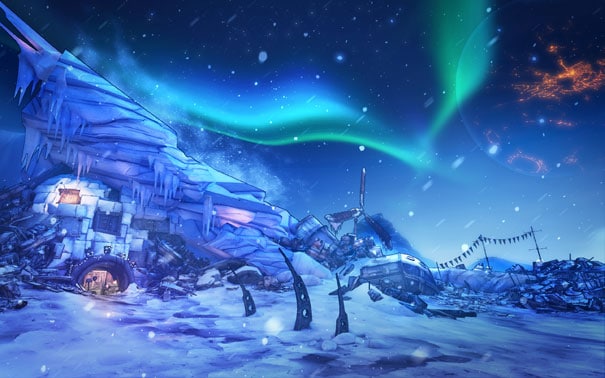
You mentioned that it’s a really big world and you’ve also said in the past that Borderlands 2 is a much bigger game than the first game. Is that in terms of game world or content as well?
Both. When we started pre-production on Borderlands 2, we didn’t really have an idea of how successful Borderlands 1 was going to turn out to be. So when we started development, we started with the same budget that we had for first game. As we finished pre-production, we saw what was happening with Borderlands 1, and we realised that ‘Hey, we can afford to do a lot more here’, because Borderlands 1 was way more successful that we had even hoped. We had an idea of what we needed it to do and what we hoped it would do, but what it actually did was way more. It was wildly successful, so that gave us the ability to do a lot more and spend a lot more without it being an irresponsible decision. We ended up doubling the budget for Borderlands 2, and one of the consequences of that was that we were able to build a lot more stuff!
Also, we’ve gotten better at building Borderlands. A lot of our budget in Borderlands 1 was spent just inventing the game and figuring things out. We spent a lot of time with prototypes and design. With Borderlands 2, the core systems were there, and our budgets were spent in iterating and perfecting those systems and building all the new content. So we’ve got a lot more value for our buck. Iteration is more efficient that invention. Invention is unpredictable. Sometimes you miss and you have to throw things away and start over.
You guys have done a lot of work on competitive multiplayer in the past. What made you decide not to include versus multiplayer in Borderlands 2?
Borderlands is an adventure. It’s great playing it alone and it’s a lot of fun playing with friends, and it really commits to that game design. Conceivably, there could have been a completely separate competitive mode, but I think it would have been difficult for that to be fair since it’s an RPG and different players are at different levels. So then we’re basically telling players ‘Forget about the characters that you care about, and play with these characters’, and it stops being Borderlands; why not just play Call of Duty instead. We did, however, include the ability to PvP within the world by starting a duel. You can just hit another player with a melee attack to challenge them and they can melee you back to accept. That creates a custom dome around them wherever they are, and then they can just hurt one another till one of them wins. Duelling is just a diversion though.
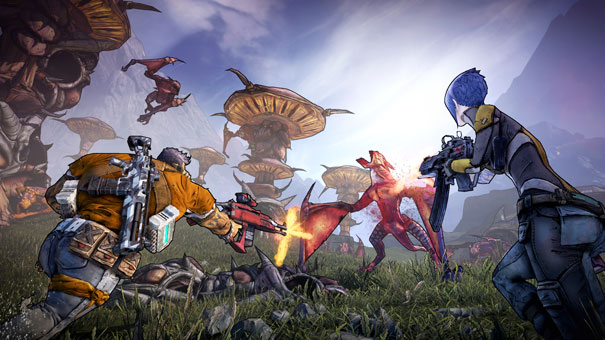
India being predominantly a PC market, how does the PC version of Borderlands 2 fare in comparison to the console versions, and are there any features that are specific to the PC version?
The PC version is the best version of the game. It offers the opportunity to have the highest fidelity graphics depending on your hardware. It’s also the most diverse in terms of its support for a wide spectrum of hardware. For a definitive list of PC-specific features, you can have a look at Claptrap’s love letter to PC. There’s lots of customisation options and lots of graphics options. It’s way better than Borderlands 1 was on PC. There’s native mouse-keyboard controls for everything, drag-and-drop support for the inventory, etc.
Are there any changes in the way the game handles online co-op this time around?
Yup. Some of the engine optimisations we’ve done, on the consoles in particular, have given us the performance so that split-screen gamers can now go online. We’ve also made it a lot more dynamic, so that drop-in and drop-out is very smooth and seamless. Also, a lot of our design decisions and some of the character skills are created with co-op in mind. In Borderlands 1, all the skills applied to single player and co-op equally. Here, the skills and skill trees tend to lean one way or another, and that’s neat from a design point of view. There’s also a trading system now, where you can trade items. There’s probably other stuff that I’m missing out here.
Our strategy this time wasn’t to abandon what we did in the first game and start over, but to take the game system that was so strong in Borderlands 1, and iterate and perfect it. The new comes from the all new characters, adventures, game world and gameplay. Everything you see and do is new, but the systems that drive them are iterated upon.
Do the individual quests affect the overall story outcome based on how you perform in them?
The answer to that would be ‘no’, but there are a few exceptions to that. Fundamentally, we want to craft the experience around maximising the value of entertainment the customer gets. So if you have a branching storyline and the player gets to experience only one of the eventualities, a lot of development effort went into something that half our customers are not going to see. We might have done a better job on one over the other and we’d be hoping they all experience that one, and if that’s the case, why offer choice at all?
We do like choice, but not in the way that you get to choose your own adventure. We want choice to reflect what it says about you as a gamer. For example, you’ll get a mission early on from a character who needs you to get something for him. But while you’re in the course of doing this, there’s another character, who wants the same thing. Once you get it, you can only give it to one of the two characters. Each of them offers a reward, and each has a good reason for wanting it. The reasons why they want it have different ethical implications, and there’s no clear right or wrong answer. This choice doesn’t change the outcome, change the ending, or put you down a branching path, but there’s an emotional consequence to it. It tells you something about yourself as a player, and we think that’s really interesting. What’s great is that we now have telemetry to track all these statistics and player decisions, and while some will go 50-50, there are others that – even though they’re completely free choices – every player chooses the same option. We love that.
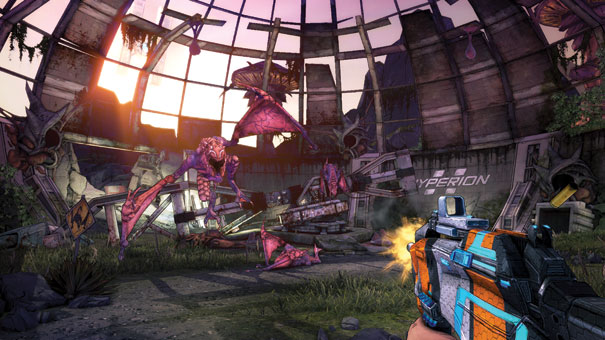
Going between single player and co-op, how does the AI scale and how is progression different as you add more players?
When you play co-op and new people join the game, there’s a scale up in difficulty, but there is also rewards scaling. So while the enemies get more challenging, there’s more loot, and better loot. We had some of that in Borderlands 1, and that system has been iterated a lot. As far as missions go, we’ve also incorporated a system for co-op players who are at different points in terms of story progression. So if two co-op players who join up are on different missions, they have an option to resolve those missions. If one player is ahead of the other, he can go back and replay it with his co-op partner who hasn’t played it. Or if your co-op partner is ahead of you, you can skip forward too, and then fill in the gaps when you’re playing alone. All of that counts. The first game did this okay, but this game makes it really nice for players who are mismatched in terms of mission progression.
The game is quite different when you’re playing it alone as opposed to co-op. When I’m playing alone, I look in every nook and cranny, and end up spending 20 minutes just looking at rocks. I want to click on every bit of loot and not miss a thing. In co-op, it almost becomes a competition. You want to be the first to get the kill and to get the loot. It’s really interesting how the tone and pace of the game changes even though it’s the exact same game. I’m really proud of the work we’ve done to resolve mission differences between single-player and co-op, which is important, because not everyone plays with a perfect four-player combination.
Borderlands 2 is set for release on 21st September for Xbox 360, PS3 and PC
